|
|
Tet-a-tet. Jeanne Marell – design of premium products and Nokia Arte
A whole era ended along with the departure of Frank Nuovo from Nokia, which is not bad at all – it is very natural for all things to move forward. Nostalgia for the times when he was still with Nokia can only bring up some warm memories, but that's about it – we are already eagerly looking for the vendor’s new phones. One of the new-wave members, the person in charge of Nokia’s premium products design is Jeanne Marell, Senior Industrial Designer.
Her official bio, just like it usually happens, can’t convey even a tenth of the positive emotions we experienced from talking to her and no matter how good you are at reading between the lines, you will never guess what kind of lively, active and enthusiastic person she is from it. While we were making this interview, Jeanne’s phone buzzed around ten times, but she never took it in hands to answer. And even before the interview began, Jeanne had been replying to numerous messages during a short break between her scheduled meetings. Even though I only have some fleeting impressions of her, unlike many other interviews this one is full of life, and this has to stand for something. But, following our tradition, we will post a few lines from her official bio first and only then move on to the interview itself.

Jeanne was born in Holland and studied at Design Academy Eindhoven and Istituto Europeo di Design.
Jeanne’s career as a designer started off with BMW Group DesignworksUSA, after that she went on to design color and trim for GM and Hyundai. Two years in charge of the design for Nokia’s top-of-the-line phones, Jeanne has had a hand in the development of the Nokia 8800 Arte, Nokia 8800 Sapphire Arte and Nokia Prism collection. Speaking of the differences between designing cars and mobile phones, Jeanne notes that “with mobile phones you get to work with so many tiny details that are normally overlooked in the car industry. And all of them are important. For example, designing the Nokia 8800 Arte I was inspired by the ability to play with refined materials, making the handset’s design harmonize with its top-notch technology and content”.
Deciding what materials should be used and in what fashion, Jeanne meticulously analyzes global trends of the brand development and observes how people interact with their phones, what their expectations and priorities are. She also spends a lot of time researching cutting edge technologies and materials.
Jeanne Marell says “these days, when mobile technologies are developing so rapidly, people want to feel homey and comfortable wherever they go, having favorite music, pictures and games stored in their mobile phones. But there are people who are still scared by hi-tech and don’t want to come to depend on it – for them the mobile phone, for the most part, is a method to communicate with their loved ones. We try to cater for the needs of both groups, designing eye-candy and classy phones for work, entertainment and communication”.
E.M. First of all, why did you change your job from car industry and car design to mobile phones? These two fields seem completely different.
J.M. It is different, but not that much. I think I’ve always been interested in designing all sorts of objects and it already started when I was studying industrial design in parallel with jewelry, as a part of the course. Even within the industrial design course I kept picking completely different projects, say, one day I designed a bus, the next day it was a backpack, and after that a chair or a table. And this is what characterizes me - even when I finished my degree I did a Master in interface design to add something else to the mix, focusing on graphics. I ended up in the car industry kind of by coincidence, and not because I was a car designer… in fact, they hired me because I was not a car designer, they said they hired me because I had this multi-disciplinary approach that made me different from the car designers they already had on the team. But I would still say I wasn’t a real car designer like people who had been educated for this kind of thing or really focused on designing cars. I think the concept of designing is always the same, well, for me at least. It starts with understanding people, it doesn’t matter whether you design a car or a phone for them, people are always the same, that is, they live in the same places, they eat the same food, they dress the same, and you just design something for different aspects of their lives and I think that is the biggest part of being a designer is observing people and analyzing what you see, drawing inspiration from it. So the difference may not be as a big as it seems at a glance; of course a car is, you know, probably the second biggest investment that people make after a house and it’s a purchase that will stay with them for much longer than a mobile phone. Mobile phones, in most regions, get renewed once in two years or so, they don’t need to be on the road, like a car, for 15 years. Moreover, mobile phones, in the Western world, are sort of disposable good, however scary it may sound. So I think in this very sense mobile phones and cars are quite different. Basically, when you design a car, you have to keep in mind that this car is going to change hands, and ten years from now you will still see it on the road and while it might be recognized as a dated model, but should not look weird or get worn-out, whereas with a mobile phone all you need to know is it will last for a couple of years and we assume most people won’t even keep it that long, and get a new unit after a year or two. So for some of the niches in the market we design for, we actually allow ourselves to be completely on trend and be quite extreme in that. The fact that some phone now looks extremely fashionable means that it is super cool right now, but it also means that in three years from now, people will look at it and say “oh, that’s totally 2008”; which is in fact a complement for people who want to look cool in 2008, this is what they want now. So maybe three years from now it will be recognized as an icon of its time, but the time well past, whereas if you look into the 8800 series, it much more about building a heritage for premium consumers. It’s rather an evolution, and not much of a revolution – we continue the route we are already on and we keep adding new elements, new technologies, slightly different appearance etc.
Could you name three or more of your favorite cars and mobile phones?
J.M. I’ll start with cars. And also I will explain why they are my favorite one, because naming them all is just useless. I really like the BMW Z4, because it was really pushing the boundaries of what is known as the car design. I mean the car has always had four wheels and a steering wheel and apart from that it is a box that can be more or less rounded, but I think the BMW Z4 was really when this language of flame surfacing came in, when it had convex surfaces all of a sudden, much more extreme and extravagant than people were used to see and I really appreciated that back then. In a way, I like going back in time a lot… the Ford model T was such a strong statement of mass production in its time, saying “we do anything you want, we are personalizable, you can have any color you want as long as it is black”. At that time, people were used to one-offs, not only cars, but everything else around them. There was no mass production of industrialized goods. So I think this is admirable in a completely different way than the BMW Z4. And another car that I admire, the concept of, rather than actually the outcome of it, is the Smart.
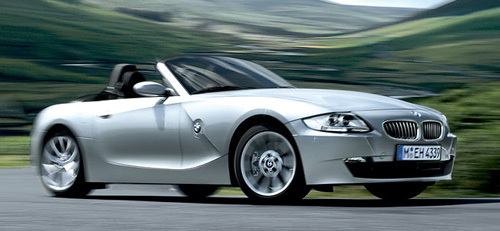
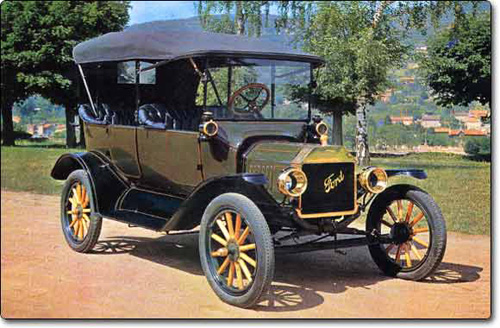

I think that was really presenting the concept of a car displacing people from A to B in a different way, you know, the whole parking issue. I think that was quite a change of mindset that really deserves to be recognized. So that’s about cars. Now for phones. I must admit I’ve always liked Nokia. I’ve only been with Nokia for a year and a half, but I owned only two non-Nokia phones before joining the company. I think the whole concept of exchangeable covers that started in the very beginning was a really good move. So even at the times when there weren’t as many models as there are today, and the market was so much smaller, this whole idea gave your phone a kind of personal twists, I think that was great. I’m not even talking about the form, but more about the concept of it. Then, the second concept I liked was the swivel mechanism that was significantly different from monoblocks or folders that people were used to back then. That was quite admirable. And I think the third one is the continuation of the heritage of Nokia’s premium phones, when there is no need reinvent the wheel every time we make a new phone, we rather keep fine-tuning it.
E.M. Let’s get back to cars. There is a very big car museum in Los Angeles, Petersen Automative, featuring a lot of futuristic cars that were in fact popular back in the 50-s and were actually seen on the road. Curiously, these days I keep noticing that a lot of people are looking into the heritage of the mobile phone industry, as they want to buy something, let’s put it this way, really old-fashioned but with new features inside, like a color screen, enhanced wireless connectivity etc. Do you think it will be feasible to design phones in colors and forms that were popular back in the day for the mass market as well, rather than the premium segment alone?
J.M. I think there is a different way of looking at this. People do expect the technology to be up to date and they will never be satisfied with something outdated. You saw at some point that mobile phones got smaller - I think the 8210 was a good example of a big step forward. And today, if you asked “Are we going to get back to the shape of 5510 or 8210?” the answer would be “Probably not”, because people these days expect to have contemporary functionality in their phones. And if we go back to the 8210 and try to imagine all of today’s features crammed inside, the question is, how we will be able to surf the Internet on a screen of that size –a bigger screen is obviously in order, but you can’t make the screen bigger than the phone itself. So I think this brings a whole lot of challenges. Yes, you can design a phone with basic functionality in retro-style… I wouldn’t want to say “retro” actually, since “retro” in phones, as in the computer industry, has a different meaning, it is still a little bit of a negative connotation, whereas in cars it stands for something classic and timeless. So with phones it is really about understanding the expectations of these people, do they want retro in the sense that the phone looks handcrafted –we can do that; is it something about basic functionality, when they only want to make phones calls – we can do it too; or is it “Oh, we want it look exactly like the 8210, but with all contemporary features onboard” – now that’s difficult, because you cannot have Internet or GPS on a phone like this. That’s why we need to prioritize what’s most important and what goes first. I think if you look more into design, premium segment aside, when we did the L’Amour Collection, it was really inspired by art deco, and that’s a way of interpreting “retro”, when we revived an old style known in architecture and interiors – that’s the thing we can do.
E.M. What about your product lines and the materials you use for them? Like metal in the high-end (Arte), normal plastic in fashion-conscious solutions and low-quality plastic in entry-level offerings (Evolve). Interestingly, your mid- and low-tier products have no metallic accents, whereas solutions from other makers benefit from using metal in their designs. On top of that, look at the 6500 Classic that is made mainly of plastic, but looks as if it was all-metal - occasionally people end up disappointed by this fact. The point is, normally consumers expect to feel with their hands what their eyes see.
J.M. It is all about managing expectations. If you look into the premium segment, we have always used “the real thing” – if it looks like metal, then it is metal, if it looks like leather, then it is real leather. Here, it is all about real materials, and in the premium segment we know that people like to feel the realness almost in the weight of their phones, whereas in a slightly lower end of the market somebody else would not even want a phone this heavy, because they tend to carry it in different ways. Maybe a couple of years ago it was still quite expensive to mould aluminum, so at that time it wasn’t feasible to keep the price point of lower-end phones by using metals. Fortunately, the technology is moving forward, and things are getting easier, as new production techniques come along, so that we can use different materials at lower costs, and this also has a lot to do with production volume and other things. That doesn’t mean it is always convenient to use metal, because depending on the shape we want to get, it might not be doable, in which case we might want to make the phone appear like it is made of aluminum. Adding metallic accents might not be feasible or it might be even feasible and cost-efficient, but maybe it would not survive the drop tests or the phone’s radio would be barred. In this case there cannot be a compromise – it is all about functionality. So it is always about finding the ideal balance of the package, people’s expectations, and the type of form language we want to use. Then we try to figure out how we can combine these things in a proper fashion.
E.M. How long do people normally use Nokia’s premium products, as you see it? A year, two, or more?
J.M. I think it depends. I’ve interviewed a lot of our premium consumers and some of them told me they would happily use their phones for five years, and they were still using the initial premium products from Nokia because they loved them. And others would love to be up to date with the latest technology and for them it is all about having cutting edge looks and technologies in one package. And they feel an urge to renew their phones after a year of use, because new features coming along, so they would like to benefit from them. So I think it really depends on the person we are looking at. I don’t think there is an average somewhere; I only know from my conversations with our customers that it really varies a lot, just as much as for all other phones.
E.M. As far as the 8800 series goes, people in Russia readily swap their phones - from the original phone to the Sirocco edition, then to the Gold variation and Arte. Basically, it is a very hot offering here. This also means we have a lot of second-hand premium products on the market, which is not very good for the brand image.
J.M. I think it is good for the brand in the way that it makes products accessible to people who aspire to them, but wouldn’t have had the means to get a brand new premium solution. Plus it generates excitement around Nokia, as people can afford its finest solutions, maybe not when they are out there, but they can buy previous editions. I think that’s fine too.
E.M. What do think about the Nokia Luna? Personally, I really like this phone, its design and glass, however people over here consider it the cheapest version of the 8800.
J.M. It was not designed with that in mind. It is very interesting to hear how Russian people perceive it that way. The Luna was a new introduction; it wasn’t clearly linked to the original series that has followed its own heritage. While it is meant for the premium market, you are spot-on that it is targeted at the lower end of the premium market, a niche within a niche - that would be the right way to call it.
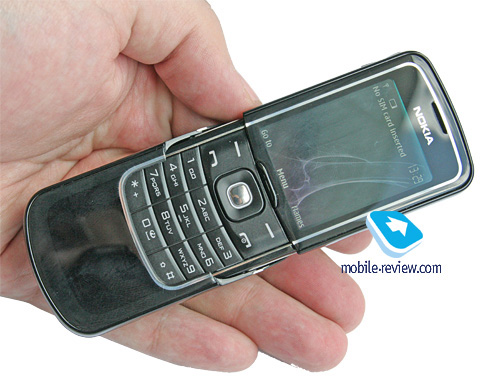
E.M. Could you compare the Prism collection with some other line-ups available on the market, or it’s a unique series that has never been seen before in Nokia’s or any other maker’s portfolio?
J.M. Fashion is a hard thing, as in a way you can say that the Prism is a stand-alone series and at the same time you could argue that it is a part of the fashion collection – yes it is extremely different from L’Amour, so there is no continuation that you see with the 8800 series, but it is always about being on trends at the moment it comes out; and when the trend changes dramatically, the fashion collections follows outright.
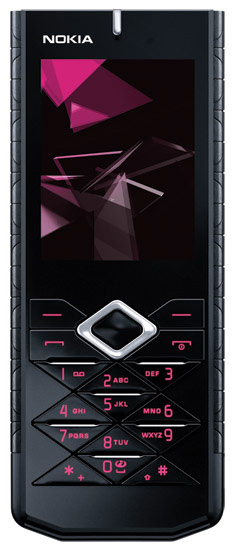
E.M. Why would you need two products of different price tiers in the Prism collection? In my opinion, while the cheaper model is aimed at the mass-market, consumers can’t see the real difference in design between it and the senior offering; so they start questioning themselves, whether they really need to go for an inferior solution.
J.M. I wouldn’t say it is a copycat in terms of design; it is more of a different branch of the same design inspiration, so we’ve created a design story based on the trend, which is the Prism collection. And then we took this story and said: “Okay, within this category of people who are aspired to fashion trends, there are two ends”. The lower end is even more about explicitly showing how cool you are, as the higher tier is a little bit more subtle and the value of materials, as well as the value of the person carrying it, becomes more important. As far as the Prism is concerned, it is also about appreciation from others, and there are also more subtle people who are in the know and will recognize tiny characteristic and very unique details of the higher-end model. So it is not a line-up with two identical models – the more expensive one has a lot of added value in terms of materials, usage and style.
E.M. I want to ask you about light effects and sound for your premium products, as these aspects are so much different from the mainstream products. How many people in Nokia are working on them?
J.M. That’s a difficult question. A lot, that’s for sure. It is not like in the car industry though, where you actually have some designers in charge of the sound you hear when the door closes. I don’t know how you call them, but they do in fact exist. I don’t think Nokia is that extreme, but yes, we actually worry a lot about it. The slide mechanism in 8800 devices is just not any slide and if you use a lower end product it won’t have the same spring or sound as the 8800 series. But it is something more of a joint ambition I would say – all our designers and engineers, everybody in the management, know that when creating a product like this we have to pay attention to every detail and we can spend extra time and money on getting everything absolutely right.
E.M. Ryuichi Sakamoto composed music for the original 8800, and the 8800 Arte was taken care of by a new DJ with some electronic music. Why do you need to change the music style of the 8800 series in a big way? You were talking about the heritage of your products, but still you run with different music styles in every new product.
J.M. I think music, since it is something software-based, is easy to personalize, so while you can’t change much about how the phone looks or the materials it is made of, but music is the aspect people can always personalize on their own. We try to bring something that we feel is contemporary and suitable for the premium phone segment when the phone comes out, and if there is a change in what the people who buy this product appreciate, we surely follow that. Curiously, you will find a heritage if you look at Nokia Tune, for example that sounded rather as if it was coming out of a can ten years ago; but now that we have better speakers and sound cards and everything all this technology allows us to compose the same tone in a lot of different ways and we have compositors, like Brian Eno, who make interpretations of the same tunes, so it is still a recognizable Nokia Tune, but it oozes exclusivity.
E.M. Why did you pick brown for the Sapphire Arte, not black or some other color?
J.M. When we did our collection we were challenged by the Marketing department to think of a variant that would appeal to female consumers without making it overly feminine. So the obvious wayout was to say “Let’s make it pink”; while I think when it comes to the premium segment there is always a niche for pink or something, we really wanted to do something still classy, but yet very different from the professional appearance that a black phone would offer, so I researched a lot of luxury goods in other industries and brown was the color that was coming back. Brown was actually recognized as a contemporary color - cars being chocolate brown, handbags getting more into the range of coffee and chocolate tones, which was a nice departure from black, grey and silver. Even in the jewelry industry, where silver gold, yellow gold and white gold have been around for ages, warmer tones like rose gold have made a comeback; people have started to appreciate wood in quite a different way. So it was all about warming up. And we were focused on creating something classy, yet different. Then I experimented a lot with specific colors and materials, and once we defined we were going to use leather, sapphire, metal and brown, it was a bit of a juggling game of how we could make these elements go together, because there were a lot of different materials in that phone, and they were produced in very different ways. It was really about finding out how we could get the color of the stone that would go well with the phone’s metal, and how we could orchestrate all these differently crafted, textured and shaped materials.
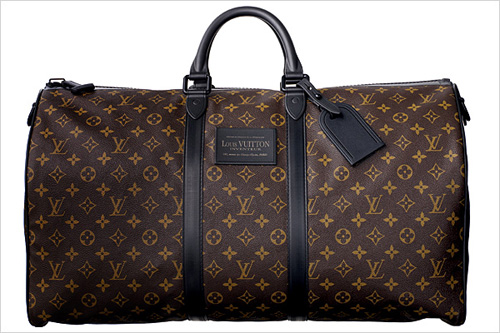
E.M. Speaking of brown, what kind of product (from accessory makers or jewelers), in your opinion, would go well with the Sapphire Arte?
J.M. Well, it is a very difficult question, because there are a lot of products for different purposes. It’s the same as when you asked me earlier for three phones and three cars that I admired, I said “Well, I have to explain why I admire them”. Designers of different products have different sources of inspiration, slightly different stories, but color-wise I would link the Sapphire Arte to Italian fashion brands, which have gotten really heavy on brown of late, as well as rich and reflective materials as well.
E.M. Nokia used to produce some fashion-savvy accessories like bracelets with displays, pendants etc, but nowadays there are no Nokia-branded accessories available in this segment. I suppose the Nokia Arte could use some jewelry brought about through cooperation with a fashion house. Do you have any plans on establishing this sort of partnership with jewelers or someone else in the near future?
J.M. Can’t really share with you what we are planning right now. It is always a possibility.
E.M. Speaking of your competition on the market, are there any products that you like or dislike?
J.M. I think all makers define their own niches of people who they want to design for and address what they see in the best possible way based on the resources they have, technologies, corporate heritage. Take, for example, the iPhone - what I really like about it is that Apple literally confirms the point of view we have at Nokia is that there is a very big group of people who want to be connected and share their lives, surf the Web. But I think I am not the right person to judge efforts of other makers.
E.M. Is there any chance we will see more exclusive models for specific regions, like the 8800 Black edition that was released for Russia?
J.M. I think what is very interesting in the global market is that products designed for one place are sold somewhere else too, and people buy them , for example a Miu Miu handbag is designed in Italy, but people in Russia are as happy to buy it as people in Japan, despite having different environments and cultures. If we recognize that Russia or any other country has a huge market for one specific type of phone and has a big desire for a special color variant, we will always investigate the possibility to cater for that. There are always local flavors, take the 8800 Sirocco Gold for example – we know there are many countries where gold is very much appreciated, like India, where gold is a big part of their culture, but they see it less related to a hi-tech product like a mobile phone; this doesn’t mean the Sirocco Gold wasn’t successful there, but maybe in Russia it could do better than in India. All in all, if a country has a big market for some solution, we might decide to address its specific needs, sometimes it is worth it, sometimes it’s not.
E.M. What fields or things you draw inspiration from for your handsets? Sea maybe, some foreign countries?
J.M. We take inspiration literally from everything, and to give you a better idea of what I mean, I should say that the Prism collection was largely based on architecture, we basically picked up the trend that started in architecture, and now when the phones are already out we get to see it in fashion everywhere, whereas for other models we might be more focused on the accessory industry, or we can draw inspiration from nature. If we go back ten years or so when the Xpress-on covers came out on the 6610, there was this color trend, where the phone changed a little bit from dark green, to a burgundy red. It was a new technology and a new pigment at that time but it was inspired by insects like beetles and their shells change in the light.
E.M. Thank you for your time! Any final shout-outs?
J.M. I’m always happy to share my thoughts on design. In many ways, this trip was very unusual, full of new impressions and contacts. I would also like to thank all people who love beautiful and functional things, and I know there are many of them here in Russia. I hope it is not the last time we meet. Thank you.
Eldar Murtazin (eldar@mobile-review.com)
Translated by Oleg Kononosov (oleg.kononosov@mobile-review.com)
Published — 28 February 2008
Have something to add?! Write us... eldar@mobile-review.com
|
News:
[ 31-07 16:21 ]Sir Jony Ive: Apple Isn't In It For The Money
[ 31-07 13:34 ]Video: Nokia Designer Interviews
[ 31-07 13:10 ]RIM To Layoff 3,000 More Employees
[ 30-07 20:59 ]Video: iPhone 5 Housing Shown Off
[ 30-07 19:12 ]Android Fortunes Decline In U.S.
[ 25-07 16:18 ]Why Apple Is Suing Samsung?
[ 25-07 15:53 ]A Few Choice Quotes About Apple ... By Samsung
[ 23-07 20:25 ]Russian iOS Hacker Calls It A Day
[ 23-07 17:40 ]Video: It's Still Not Out, But Galaxy Note 10.1 Gets An Ad
[ 19-07 19:10 ]Another Loss For Nokia: $1 Billion Down In Q2
[ 19-07 17:22 ]British Judge Orders Apple To Run Ads Saying Samsung Did Not Copy Them
[ 19-07 16:57 ]iPhone 5 To Feature Nano-SIM Cards
[ 18-07 14:20 ]What The iPad Could Have Looked Like ...
[ 18-07 13:25 ]App Store Hack Is Still Going Strong Despite Apple's Best Efforts
[ 13-07 12:34 ]Infographic: The (Hypothetical) Sale Of RIM
[ 13-07 11:10 ]Video: iPhone Hacker Makes In-App Purchases Free
[ 12-07 19:50 ]iPhone 5 Images Leak Again
[ 12-07 17:51 ]Android Takes 50%+ Of U.S. And Europe
[ 11-07 16:02 ]Apple Involved In 60% Of Patent Suits
[ 11-07 13:14 ]Video: Kindle Fire Gets A Jelly Bean
Subscribe
|






